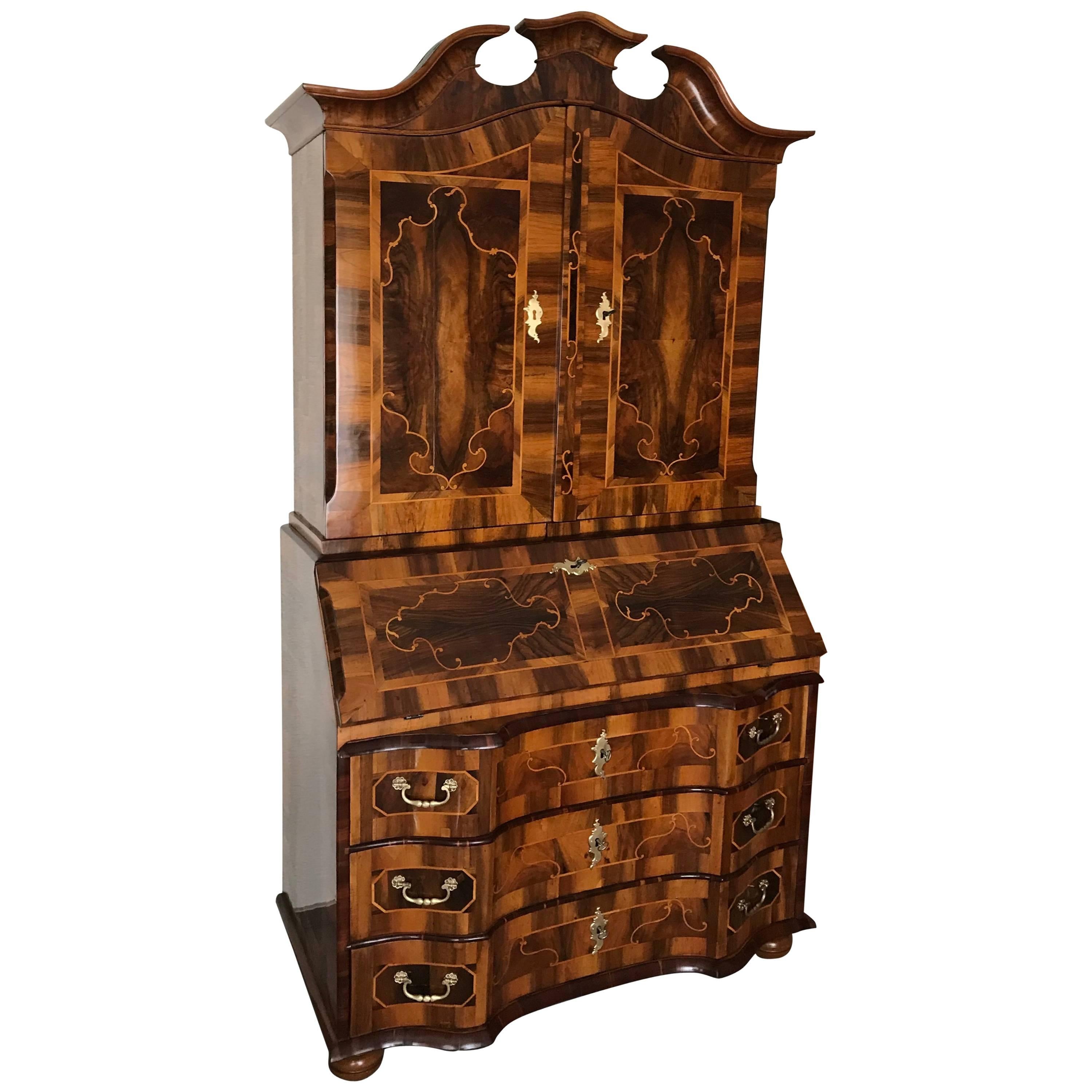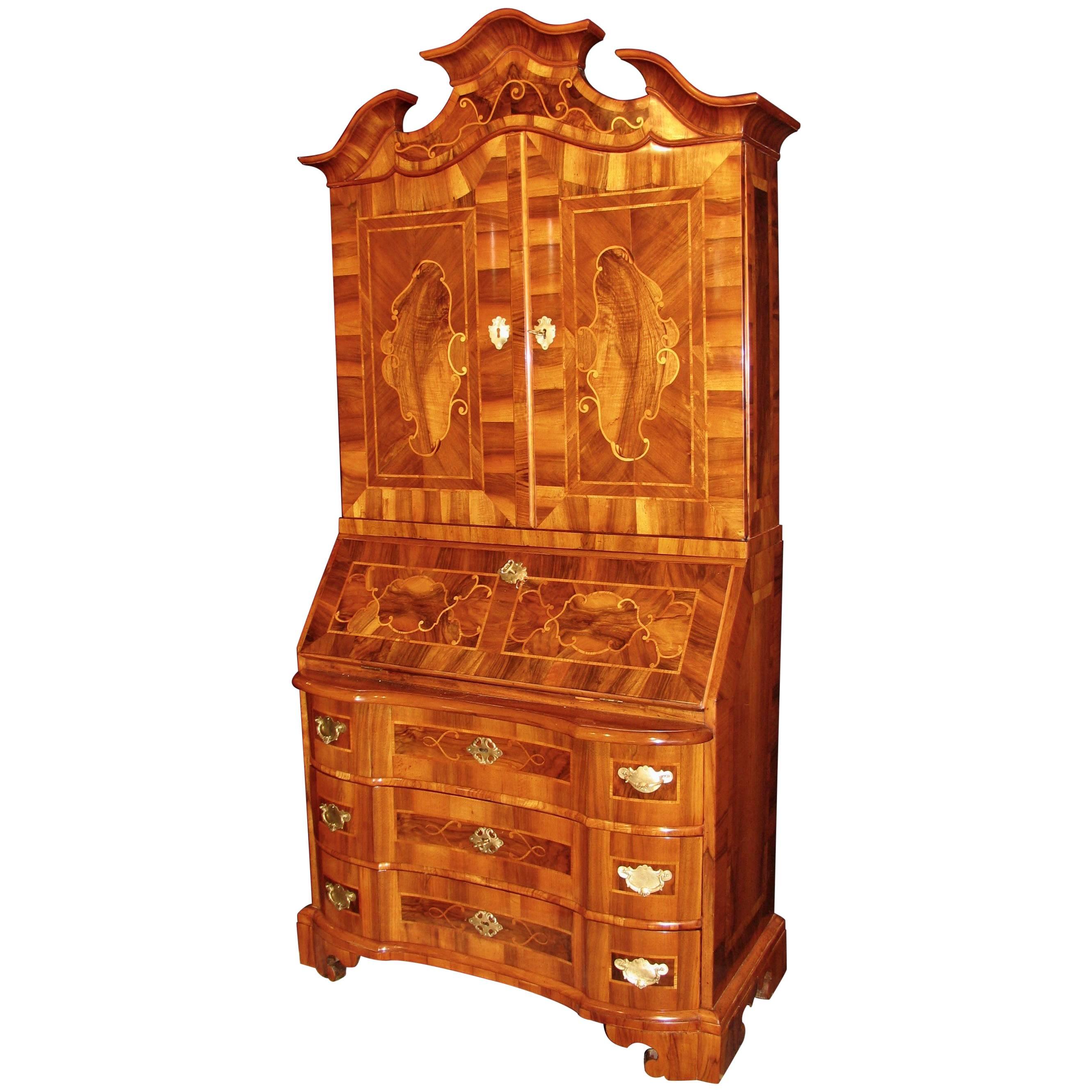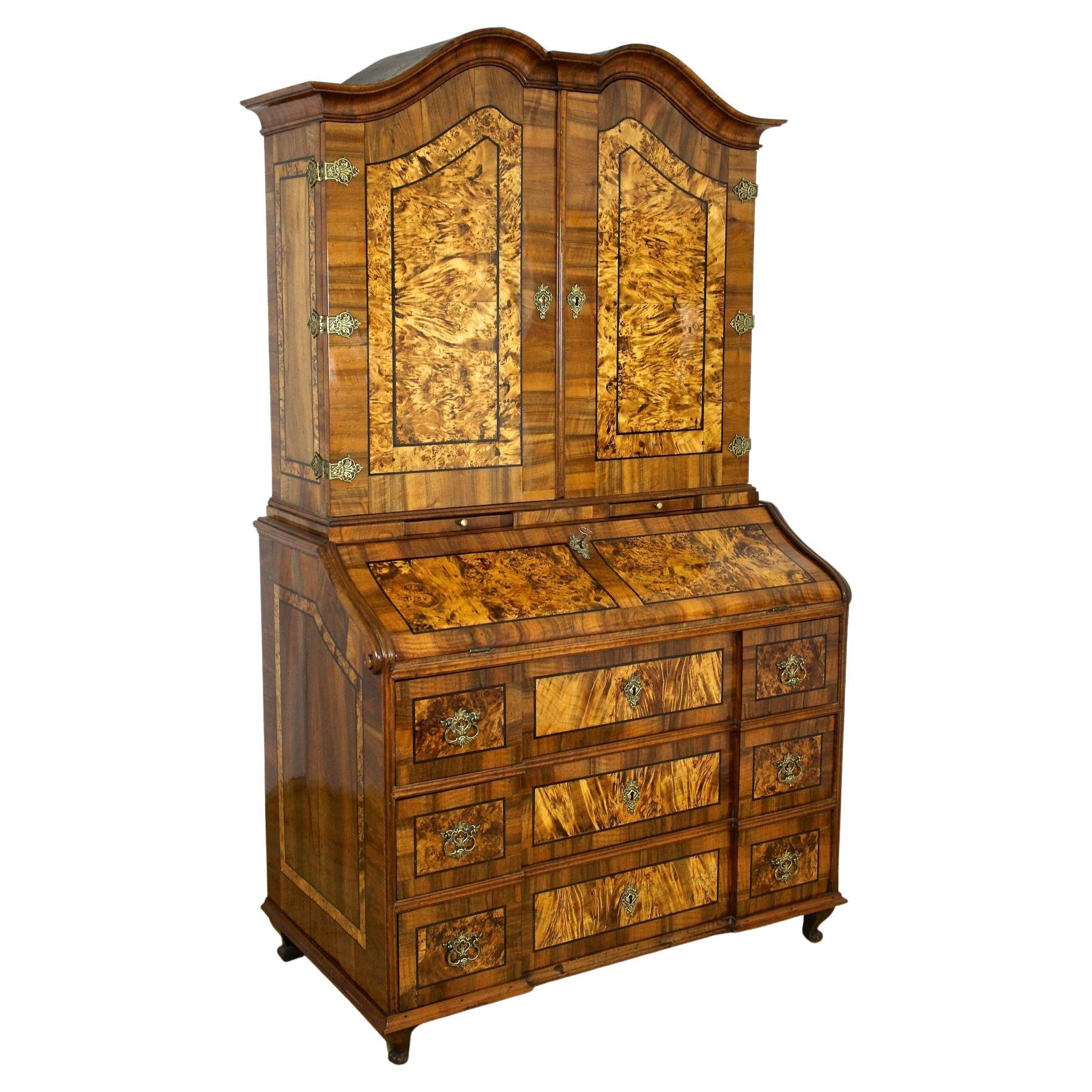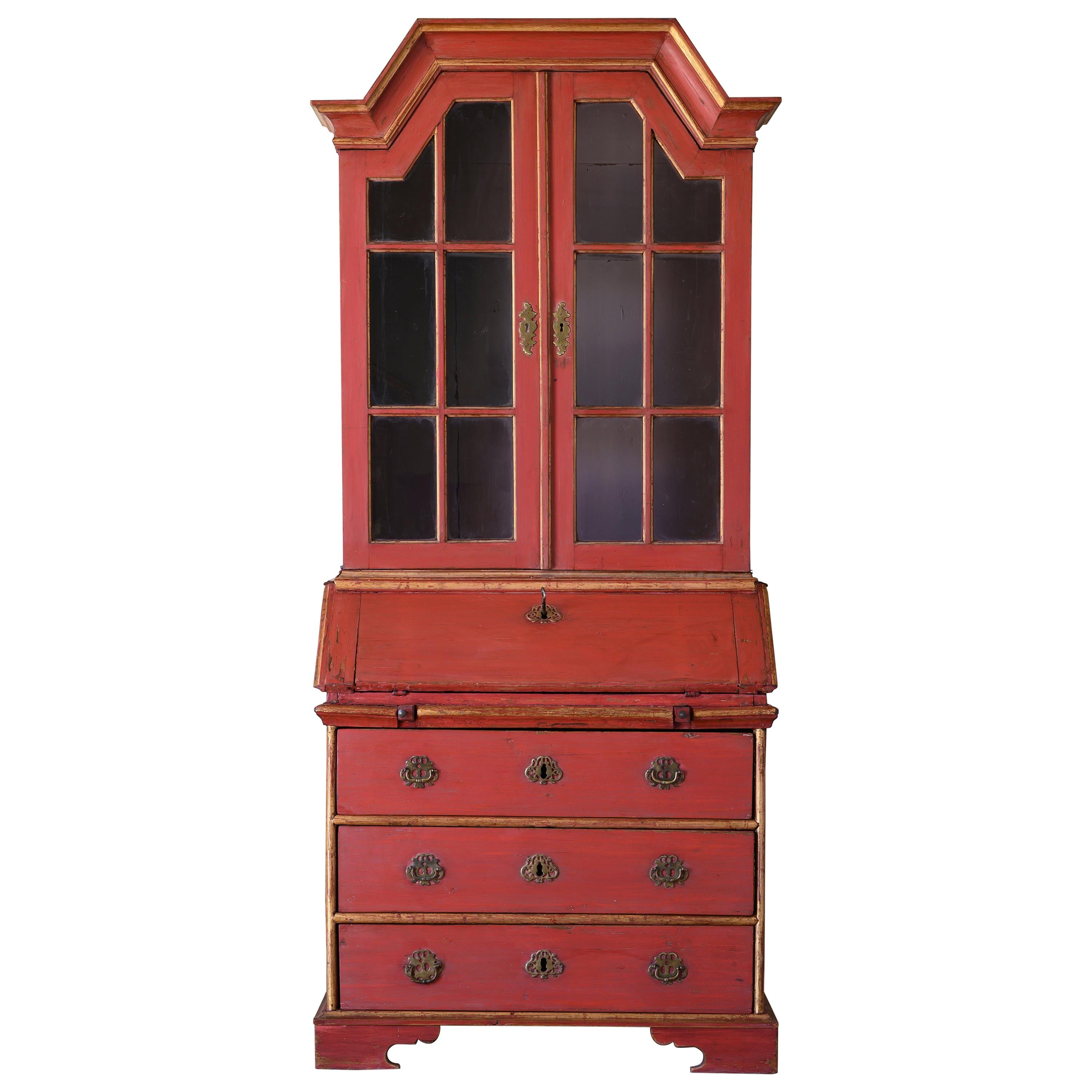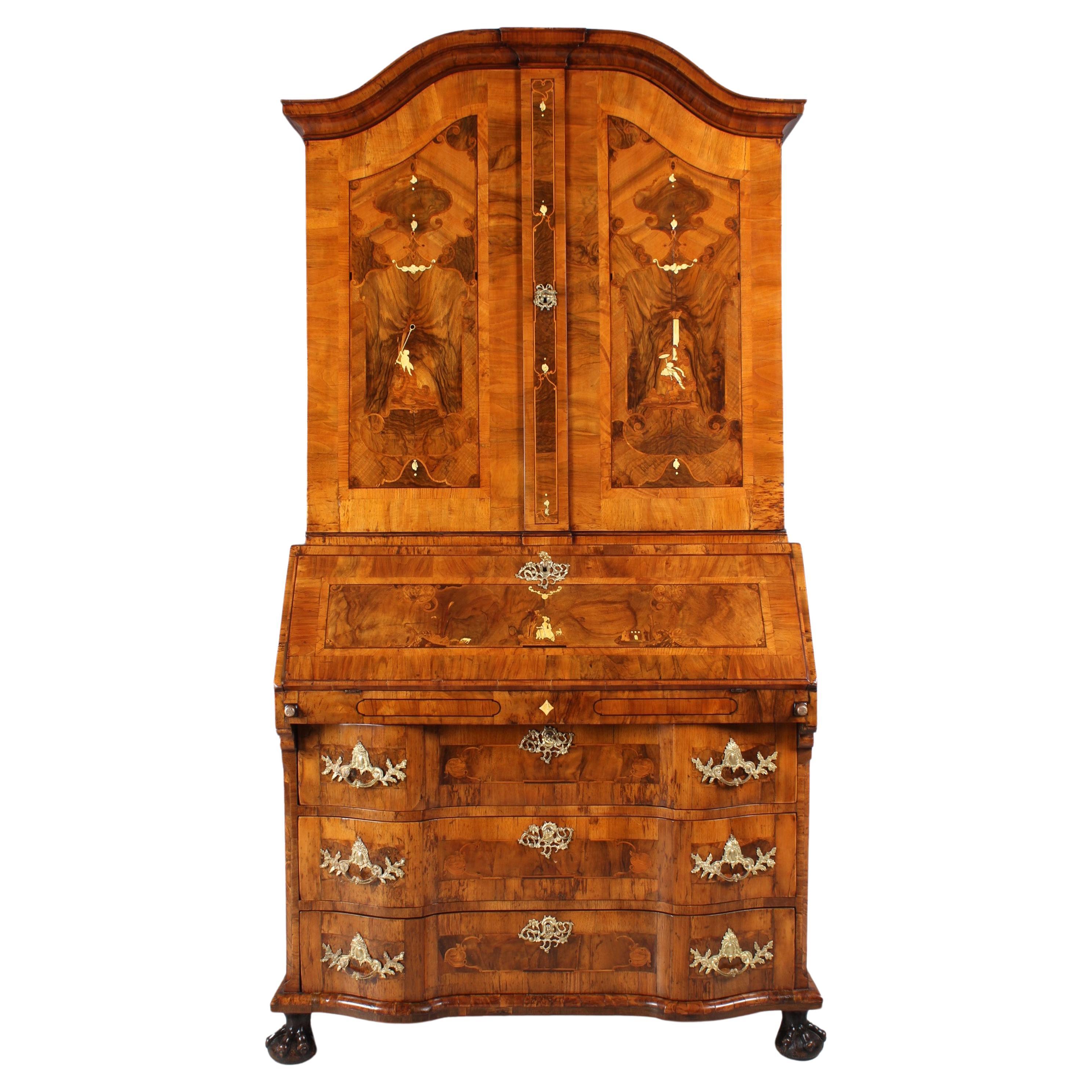Items Similar to Baroque Cabinet with Secretaire, Germany, 1750-1760
Want more images or videos?
Request additional images or videos from the seller
1 of 17
Baroque Cabinet with Secretaire, Germany, 1750-1760
About the Item
Outstanding baroque cabinet with fall top secretaire, South Germany, 1750-1760. Beautiful walnut veneer with exquisite figural and landscape marquetry on writing top and doors. The cabinet is in very good condition. It will be shipped from Germany. Shipping costs to Boston are included.
- Dimensions:Height: 86.23 in (219 cm)Width: 46.46 in (118 cm)Depth: 22.84 in (58 cm)
- Style:Baroque (Of the Period)
- Materials and Techniques:
- Place of Origin:
- Period:1750-1759
- Date of Manufacture:1750-1760
- Condition:Refinished. Wear consistent with age and use. Refinished and French polished.
- Seller Location:Belmont, MA
- Reference Number:1stDibs: LU1772213490352
About the Seller
5.0
Gold Seller
These expertly vetted sellers are highly rated and consistently exceed customer expectations.
Established in 2013
1stDibs seller since 2015
231 sales on 1stDibs
Typical response time: 1 hour
- ShippingRetrieving quote...Ships From: Belmont, MA
- Return PolicyA return for this item may be initiated within 2 days of delivery.
More From This SellerView All
- Baroque Cabinet with Secretaire, Germany 1750Located in Belmont, MAStunning original baroque cabinet, Germany 1750. The cabinet originates from the area of the city of Brunswick. Walnut, plum wood and satinwood veneer. The cabinet will be directly s...Category
Antique 1750s German Baroque Cabinets
MaterialsWalnut
- 18th Century Baroque Cabinet with Secretaire, Germany, 1760Located in Belmont, MA18th century Baroque cabinet with secretaire, Germany, 1760, walnut veneer. Beautiful piece in excellent condition, professionally rest...Category
Antique 1760s German Baroque Cabinets
MaterialsWalnut
- 18th Century Baroque Secretaire, South German, 1750-1760Located in Belmont, MAUnique 18th century Baroque secretaire, South German, probably Lake of Constance region, circa 1750-1760. Elaborate bombe shaped Baroque secretaire with beautiful walnut, elmwood an...Category
Antique 1750s German Baroque Secretaires
MaterialsWalnut
- Baroque Secretary Desk, Germany 1750, walnutLocated in Belmont, MAThis beautiful Baroque Secretary Desk comes from Southern Germany and dates back to 1760/70. The secretaure has a gorgeous walnut veneer grain. The u...Category
Antique 1760s German Baroque Secretaires
MaterialsWalnut
- Baroque Secretaire, Bern ‘Switzerland’ 1750, Attribute to Mathaeus FunkBy Mathaeus FunkLocated in Belmont, MAExquisite 18th century Baroque secretaire, Bern (Switzerland) 1750, attributed to Mathaeus Funk (cabinetmaker 1697-1783). Rectangular body with two ...Category
Antique 1750s Swiss Baroque Secretaires
MaterialsWalnut
- Louis XVI Style Fall Top SecretaireLocated in Belmont, MALouis XVI style fall top secretaire, France second half of the 19th century, mahogany veneer with white marble top. In very good condition. The sec...Category
Antique 1890s French Louis XVI Secretaires
MaterialsMahogany
You May Also Like
- 18th Century Baroque Secretaire/ Writing Cabinet Nutwood, Germany ca. 1770Located in Lichtenberg, ATImportant 18th century secrétaire or writing cabinet elaborately made in the baroque period in West Germany around 1770. Different kinds of fine nutwood/ walnut were used to set up a...Category
Antique Late 18th Century German Baroque Secretaires
MaterialsBrass
- 18th Century Danish Late Baroque SecretaireLocated in Mjöhult, SEFine 18th century Danish late Baroque secretaire in its original finish with three drawers in the bottom half. The desk compartment features four drawers ...Category
Antique 18th Century Danish Baroque Cabinets
MaterialsWood
- 18th Century German Baroque Secretaire, Louis XV, Walnut, circa 1750Located in Greven, DEBaroque top secretary with Fine marquetry Brunswick walnut etc. Baroque around 1750 Dimensions: H x W x D: 215 x 119 x 56 cm Description: Beautiful slender writing cabine...Category
Antique Mid-18th Century German Baroque Secretaires
MaterialsWalnut
- English Regency Period Secrétaire Cabinet with Egyptian MotifsBy George OakleyLocated in London, GBA secrétaire cabinet of the Regency period Firmly attributed to George Oakley. Constructed in a finely faded and patinated goncalo alvez, having holly and purple heart stringing;...Category
Antique 19th Century English Regency Cabinets
MaterialsPurpleheart, Satinwood, Holly
- King George I Ambassadorial Secrétaire-CabinetLocated in New Orleans, LAThis highly important secrétaire-cabinet was crafted for and specially ordered by King George I for the British Ambassador to Russia. From its craftsmanship and materials to its exceptional artistry, it is a work of royal and historic significance that exudes power in each and every detail. The broken pediment at its apex features the simplified royal coat of arms bearing the king’s crown, while the interior is adorned by portraits of the British Royal Family. Placed within the ambassador’s St. Petersburg home, this entirely unique piece of furniture would have been a potent reminder of England's grandeur and political importance. Relations between England and Russia during this period were at an all-time high. Peter the Great had traveled to England in 1698 as part of his widely known “Grand Embassy” tour, wherein he attempted to gain foreign support against the Ottoman Empire. He spent a period of nearly four months there, meeting with King William III and his court on numerous occasions. Noted academic Arthur MacGregor wrote concerning the impact of the trip, “For two decades following Peter's visit, British influence in Russia reached a peak. It manifested itself in social custom, in craft practice and in ships and naval organization... it reached a significant sector of the population before relations cooled once again and the two nations pulled back from this era of unprecedented cordiality.” First and foremost, however, it is a reminder of British might and influence. By the reign of King George I, England had come into its own as a world power. Unique in its design, this cabinet is a reflection of the country’s might. It is crafted from the highest-quality solid walnut and burr walnut adorned by gilded lock plates and engraved hinges. The presence of ormolu at its apex and lining the doors was a rarity for this period, and its addition makes manifest the importance of the design. The outer doors open to reveal multiple interiors, including fifteen separate drawers around a central cupboard; the cupboard doors each bear mezzotint portraits of George I and his father, Ernest Augustus, Elector of Hanover. An etching after the portrait of George I dating to circa 1716 is in London’s Royal Academy. A second, inner pair of doors are adorned by mezzotints of the Prince and Princess of Wales (later Queen Caroline and George II), which are both after portraits by Sir Godfrey Kneller dated 1716 in the Royal Collection. A final portrait is revealed on the very interior of the cabinet, where a mezzotint of Frederick, Anne, Amelia and Caroline, children of the Prince of Wales, resides. An etching (circa 1715-1720) after this portrait can be found in the National Portrait Gallery (London). Apart from its abundance of royal portraiture, the cabinet features stunning painted decoration, including floral designs as well as clouds, birds and trees in a bucolic motif reminiscent of Eden. Its lower portion is a study in both form and function, featuring a fitted secrétaire-drawer above three additional drawers for storage. The cabinet appears in The Shorter Dictionary of English Furniture by R. Edwards from 1964, a text that is regarded as the bible of British furniture design. Edwards describes it as a “writing cabinet...given by George I to the British Ambassador at the Russian court.” The cabinet was likely made for the 18th-century German diplomat and writer Friedrich Christian Weber, who represented English interests at the Russian court from 1714 until 1719. Although Weber’s tenure as ambassador was relatively short, while in St. Petersburg, he authored his account entitled Das veraenderte Russland (The Present State of Russia), which was published in three volumes in 1721, 1739 and 1740. It may, however, also have been made for George Douglas, 2nd Earl of Dumbarton, who served as ambassador alongside Weber in 1716. Diplomatic relations ceased between the two countries in 1721. In 1928, the cabinet appeared for sale at the International Exhibition of Antiques & Works of Art in Olympia. It had previously been in the collection of the Woltner family of Bordeaux, the celebrated vintners who owned the estate Château Laville Haut-Brion and produced wine of the same name. According to the family, Monsieur Woltner was given the cabinet as a gift from an aunt who lived in Russia for many years. After leaving the Woltner collection, the cabinet was acquired by William Berry...Category
Antique 18th Century English Georgian Secretaires
MaterialsBrass
- Italian Mahogany Secretaire Cabinet, 1950sLocated in Meda, MBPrecious cabinet secretaire produced in Italy in the 1950s, The whole cabinet is veneered in mahogany with a fine solid wood carving in the center of the two doors representing two b...Category
Vintage 1950s Italian Mid-Century Modern Cabinets
MaterialsMahogany, Maple
Recently Viewed
View AllMore Ways To Browse
From Germany
German Pieces
Kitchens With Antique Cabinets
Shipping Costs
Antique Veneer Cabinet
Ship German
German Ship
Ships Cabinet
German Antique Cabinet
Exquisite Antique Cabinet
Figural Cabinet
Antique German Kitchen
German Veneer Cabinet
Baroque Germany
German Baroque Furniture
German Baroque
Baroque Walnut Case Pieces And Storage Cabinets
Walnut Cabinet German
